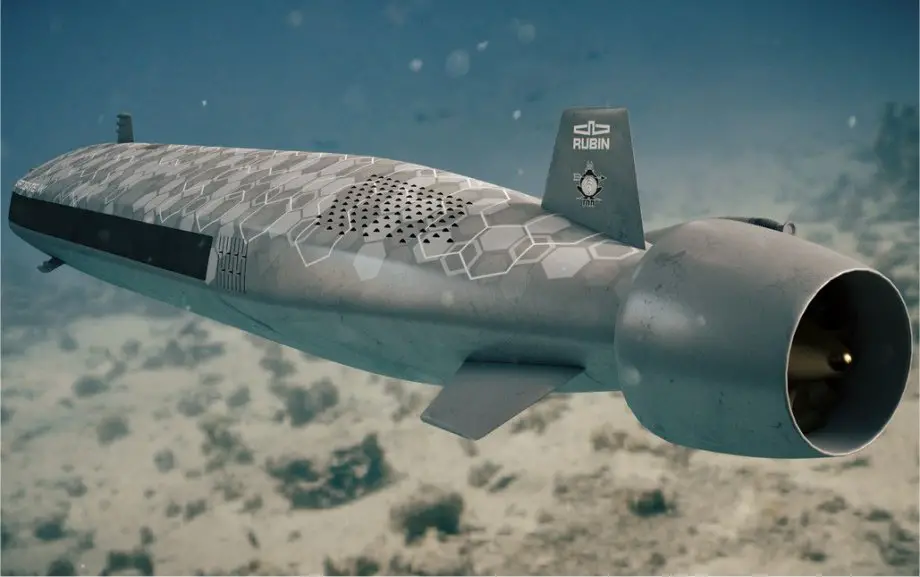According to information published by K-Politika on February 28, 2024, the Rubin Central Design Bureau for Marine Engineering in Saint Petersburg has developed a new heavy-duty autonomous underwater drone named Surrogate-V, designed to perform communication and target search functions. Additionally, the AUV is tasked with potential roles such as mine detection and ice reconnaissance.
Follow Navy Recognition on Google News at this link
 Artist rendering of the autonomous underwater vehicule Surrogate-V. (Picture source: Cont)
Artist rendering of the autonomous underwater vehicule Surrogate-V. (Picture source: Cont)
Nearly two years ago, during the Army-2022 International Military-Technical Forum, a concept of this drone was showcased. The United Shipbuilding Corporation's press service announced that Surrogate-V was developed as part of a government program for creating marine robotic platforms for military, dual-use, and civilian purposes. This program includes autonomous unmanned underwater vehicles like "Vityaz-D" and "Amulet-2," designed for rescue and research operations.
Surrogate-V is designed to operate alongside, including nuclear, submarines. The device represents an evolutionary continuation of an acoustic submarine decoy project introduced by Rubin in 2021.
The company claims to have achieved such a high level of acoustic "portrait" imitation of modern submarines that it can confidently divert and deceive ship and aircraft detection systems, and potentially stationary detection systems and complexes in the future. Thus, the drone can perform deceptive maneuvers, leading anti-submarine ships astray or even taking hits if necessary.
The new Surrogate-V has a maximum range of approximately eight hundred nautical miles (about 1480 kilometers), powered by upgraded lithium-ion battery packs and a fundamentally new power plant based on electrochemical generators. The drone can be recharged from the mother submarine or bottom charging stations.
The information received from the submarine is transmitted to a satellite using one of three possible scenarios: instantaneously, at a programmed interval, or after moving to a specified area. It can also interact with networked bottom systems in a similar manner. The new drone's capabilities extend to searching for underwater mine barriers or conducting ice reconnaissance in areas with continuous ice coverage.
The new AUV, equipped with non-acoustic means and onboard acoustic antennas, can autonomously search for targets in designated directions, using, for example, active sonar without worrying about stealth.
Another application for the new heavy-duty underwater drone is its use as a target during naval exercises, with onboard hydroacoustic countermeasures equipment capable of simulating complex tactical episodes realistically, reducing the cost of naval training and minimizing risks for submarine crews.
Regarding specific combat tasks, devices like Surrogate could be used to destroy unmanned underwater vehicles, especially as the use of such drones has been increasing in the Russian-Ukrainian conflict zone.



